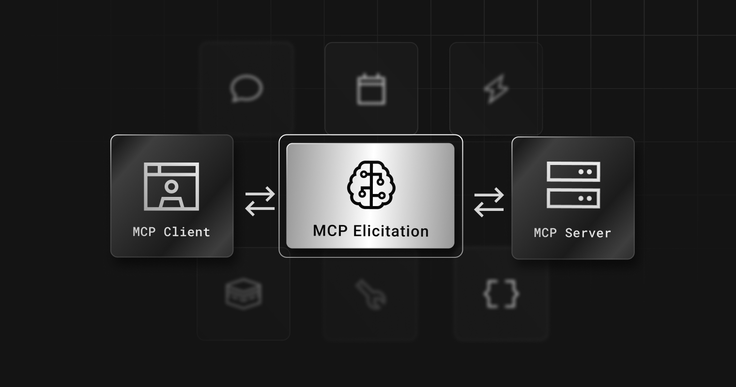The promise of artificial intelligence (AI) agents has always been about more than just answering questions. It’s about conversation, memory and context — the things that make interactions feel genuinely useful. One of the most exciting steps toward that vision is Model Context Protocol (MCP), an emerging standard that allows AI models to connect to external tools, APIs and databases in a structured way.

What is Model Context Protocol (MCP)?
MCP provides a standardized way for AI models to request information or perform actions outside their core training data. Instead of relying on static prompts or hand-written plugins, MCP servers expose capabilities in a format models can understand directly.
This means an AI agent can seamlessly connect to data sources, perform queries or trigger workflows, all through the same structured interface. MCP enables seamless integration between AI models and external data sources, streamlining workflows and data access. For developers, it creates a reliable bridge between AI reasoning and external systems.
What does elicitation bring to MCP?
Elicitation doesn’t replace MCP’s existing sampling; it formalizes and strengthens it. With sampling, an LLM can already pause and ask the user for more information—but the response arrives as unstructured text. Elicitation lets the MCP server declare exactly which variables are missing (e.g., start_date, end_date) and their types (date, int, boolean, string, etc.). The client can then render the right UI controls, validate inputs and only proceed once the request is complete and well-typed.
For example, when the model says, “I’ll need a timeframe to run this report — could you provide one?”, Elicitation prompts two date-typed fields (start and end). The server can enforce start < end, reject future-only ranges, and block ill-formed inputs before execution. By contrast, with sampling the user might reply, “between January and February next year.” That’s a plain string, ambiguous and harder to validate, leaving the server to parse intent and handle edge cases post-hoc.
This transforms the model’s experience from simple tool access into interactive dialogue, where both the model and the MCP server collaborate to get the job done correctly.
Why elicitation feels more human
In traditional MCP workflows, the burden is on the model to fill every parameter correctly. With elicitation, the server itself participates in shaping the conversation, filling in gaps and prompting for clarification.
This is closer to how humans work together. If you ask a colleague to “pull the numbers,” they’ll naturally respond with questions about which timeframe, which dataset and which metrics matter most. MCP elicitation gives AI models that same collaborative back-and-forth.
Common use-cases for MCP elicitation
Without elicitation, MCP servers often struggle when the model doesn’t provide enough detail. Here are some common scenarios where elicitation makes the difference:
Ambiguous database queries – A request like “Show me revenue” is meaningless without a timeframe, region or product filter. With elicitation, the MCP server can respond like this (especially valuable when handling complex queries that require multiple parameters or filters:
1{2 "type": "elicitation",3 "prompt": "Which timeframe would you like for the revenue report?",4 "options": ["Last 7 days", "Last 30 days", "Year to date"]5}
Instead of failing or guessing, the server guides the model to gather the missing detail.
Complex workflows with multiple steps – If an AI asks to “generate a report,” the server may need to know the format (PDF, Excel, dashboard) and delivery method. Elicitation ensures these choices are surfaced. This process supports advanced data analysis and database management by ensuring all necessary details are collected before executing tasks.
Resource-intensive operations – For tasks like running a machine learning job or scanning large datasets, elicitation can confirm scope and limits before consuming compute resources.
Error-prone defaults – When models guess at defaults (like “last 30 days”), they risk returning irrelevant results. Elicitation reduces errors by verifying intent first, improving the accuracy of results.
Sensitive or destructive actions – For commands that update or delete data, elicitation can require explicit confirmation, preventing accidental changes.
These are exactly the kinds of situations where AI agents often fail today. With elicitation, they succeed by collaborating instead of guessing. By guiding the interaction, elicitation helps transform raw data into actionable insights for decision-making.
Where can you use MCP elicitation today?
At the moment, elicitation isn’t available in every environment. Claude Desktop, for example, doesn’t yet support it. But if you’re working with MCP servers through Visual Studio Code, you can start experimenting today.
This includes the SingleStore MCP server, which exposes database queries, hybrid search and real-time analytics to AI models. By running it in VS Code, you can see elicitation in action — even if your primary AI environment hasn’t caught up yet.
SingleStore and the future of MCP
SingleStore’s MCP server demonstrates how elicitation turns database access into a genuine dialogue. Instead of just submitting queries, the AI can refine questions with your help, clarify ambiguous requests and return the most relevant insights.
The system can analyze user queries and data in real time to provide more precise results. That means faster prototyping, fewer errors, and a smoother developer experience when building AI applications powered by real-time data.
Final Thoughts
MCP started as a way to extend AI with external capabilities. Elicitation takes it a step further by giving those interactions a human-like quality — collaborative, adaptive and context-aware. While not yet everywhere, it’s available today in VS Code and already powering better developer workflows with SingleStore’s MCP server.
The future of AI isn’t just smarter models — it’s smarter conversations. And elicitation is one of the building blocks to get us there.
Frequently Asked Questions















